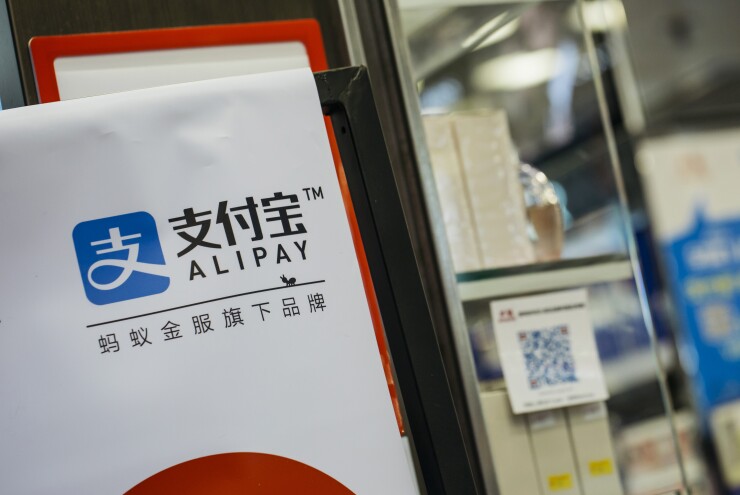China's Alipay already has broad global reach—its mobile wallet is accepted at more than 100,000 retail locations in 70 international markets—but in North America it’s just getting started.
Ant Financial's Alipay, an affiliate of Jack Ma’s Alibaba, has made significant progress in recent months through a handful of deals with North American acquirers, payments providers and merchant groups, but these cover only a fraction of the potential market for handling payments from Chinese consumers, according to Souheil Badran, president of Alipay North America.
From its initial foray in North America targeting about 5 million Chinese people visiting tourist destinations in the U.S. and Canada, Alipay is now working to expand acceptance more broadly. It is also well on its way to completing its
“We’re working to eventually make Alipay part of mainstream America by integrating with as many POS locations as possible, so one day Alipay will be a fairly widespread payment mark when consumers walk down the street of any city,” Badran said.
Alipay is sticking closely to a merchant-centric approach in North America, and has no plans to market its wallet broadly to consumers in the U.S. and Canada, which observers say would be an
"The last thing we’d want to do is go up against the third-party wallets in the U.S."
“Our whole goal in North America is to expand convenience for Alipay’s existing users wherever they go, and improving their shopping options so it’s easy for them to find other places to go—the last thing we’d want to do is go up against the third-party wallets in the U.S.,” Badran said.
In most cases, Alipay is working with acquirers who can enable the Chinese mobile wallet’s acceptance at merchant locations, but the connections aren’t turnkey, Badran said.
A pilot Alipay launched last month with
“Han Feng has links to hundreds of businesses catering to Chinese consumers in the U.S., and through them we’re helping them promote their own services through Alipay with incentives and discounts to visit those stores and restaurants, and to find other local stores that accept Alipay,” Badran said. “We’ve found that Chinese consumers will use Alipay wherever they can, and because we’re on a path toward global acceptance, the U.S. and Canada are very important regions for advancement.”
Alipay's merchant focus is different from its approach to other regions, where it worked alongside local payments providers.

“In India we’ve partnered with Paytm and we have more than 220 million people now using that wallet,” Badran said, noting that Alipay is pursuing a similar wallet-driven strategy to drive broad consumer wallet use in South Korea, Thailand and Indonesia, where it makes more sense.
Attracting acquirers and merchants in the U.S. and Canada has its own challenges, and Alipay isn’t a fit for everyone, analysts noted.
“Getting the acquirers is the first step, and after that Alipay will need to integrate with POS providers and ISOs and/or provide standalone solutions for merchants,” said Rick Oglesby, president of AZ Payments Group.
There are some technological hurdles to accepting Alipay's bar code-based wallet app in stores, and not all merchants or acquirers will see the value in it, he said. But some will.
“There’s revenue and satisfaction in it for some acquirers,” especially for those in areas with heavy traffic from Chinese tourists and others based in the U.S., Oglesby said. “Companies that have a huge overlap with Alipay’s target segments will likely consider this a big opportunity."
Alipay currently has 520 million users, and many Chinese consumers living in North America continue to rely on Alipay for a variety of use cases, observers say.
Alipay’s surge of international activity began a year ago with a partnership with Ingenico that opened up acceptance of Alipay at hundreds of European payment terminals in
The company made its first move in the U.S. in October of 2016, partnering with Verifone for acceptance at certain terminals, and also with First Data through its
Alipay launched in 2004 to support online payments for Alibaba Group’s e-commerce sites.





